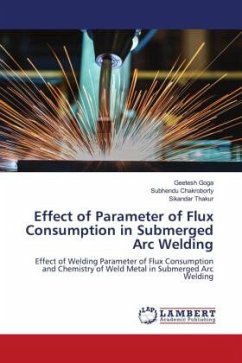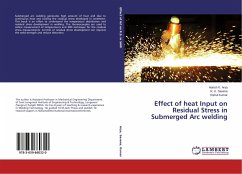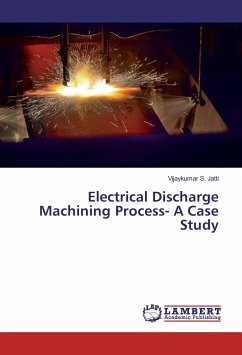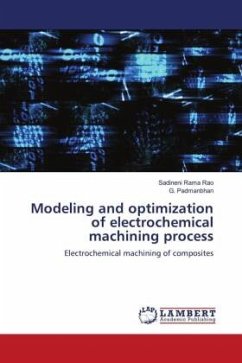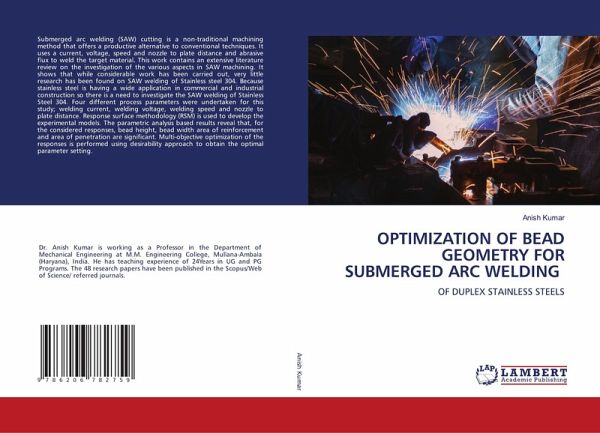
OPTIMIZATION OF BEAD GEOMETRY FOR SUBMERGED ARC WELDING
OF DUPLEX STAINLESS STEELS
Versandkostenfrei!
Versandfertig in 6-10 Tagen
45,99 €
inkl. MwSt.

PAYBACK Punkte
23 °P sammeln!
Submerged arc welding (SAW) cutting is a non-traditional machining method that offers a productive alternative to conventional techniques. It uses a current, voltage, speed and nozzle to plate distance and abrasive flux to weld the target material. This work contains an extensive literature review on the investigation of the various aspects in SAW machining. It shows that while considerable work has been carried out, very little research has been found on SAW welding of Stainless steel 304. Because stainless steel is having a wide application in commercial and industrial construction so there ...
Submerged arc welding (SAW) cutting is a non-traditional machining method that offers a productive alternative to conventional techniques. It uses a current, voltage, speed and nozzle to plate distance and abrasive flux to weld the target material. This work contains an extensive literature review on the investigation of the various aspects in SAW machining. It shows that while considerable work has been carried out, very little research has been found on SAW welding of Stainless steel 304. Because stainless steel is having a wide application in commercial and industrial construction so there is a need to investigate the SAW welding of Stainless Steel 304. Four different process parameters were undertaken for this study; welding current, welding voltage, welding speed and nozzle to plate distance. Response surface methodology (RSM) is used to develop the experimental models. The parametric analysis based results reveal that, for the considered responses, bead height, bead width area of reinforcement and area of penetration are significant. Multi-objective optimization of the responses is performed using desirability approach to obtain the optimal parameter setting.



